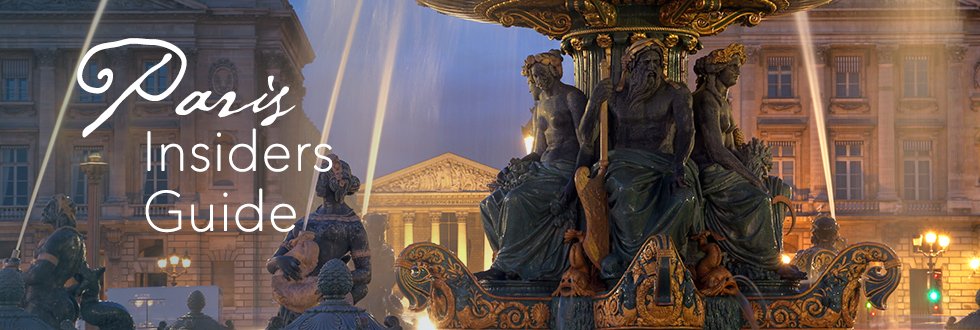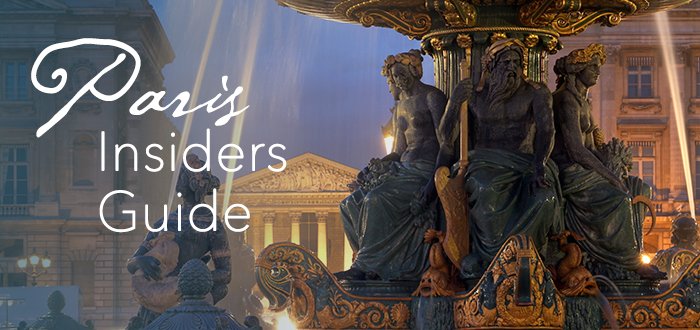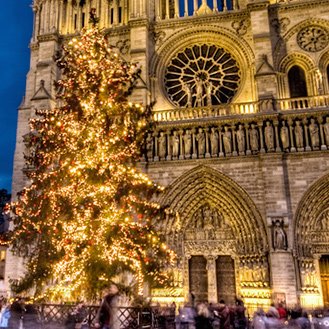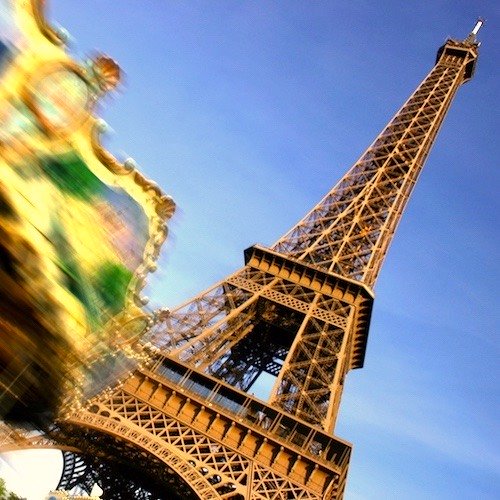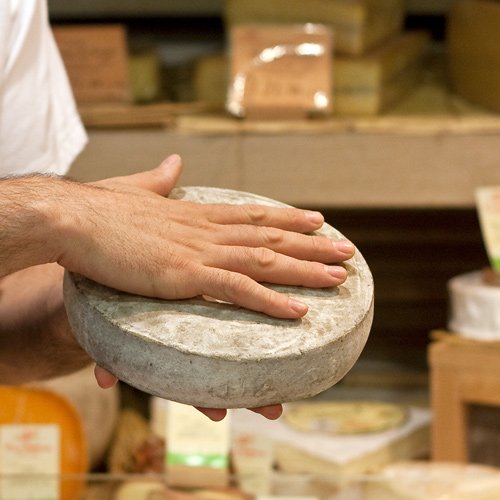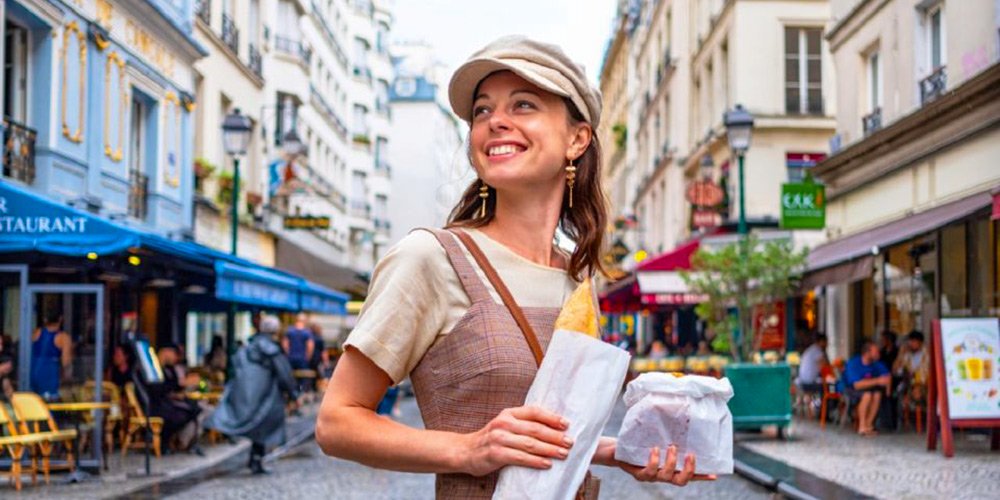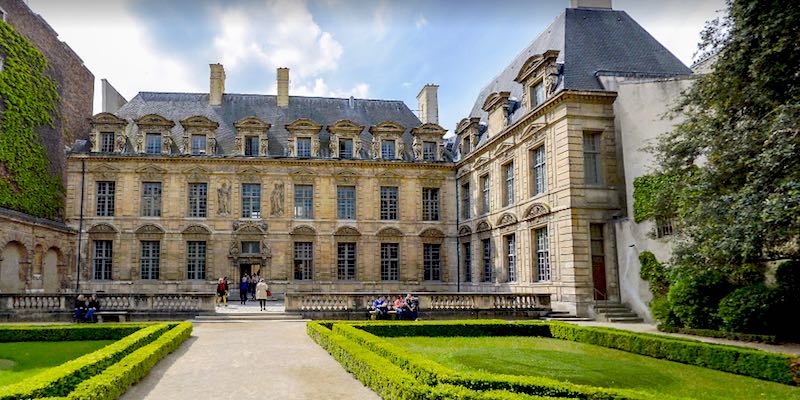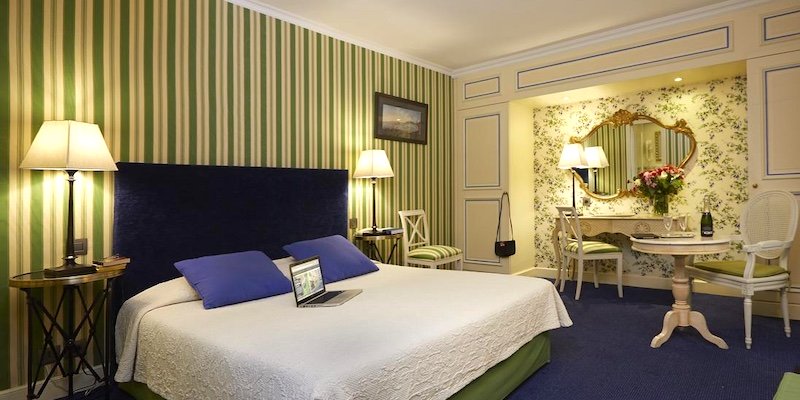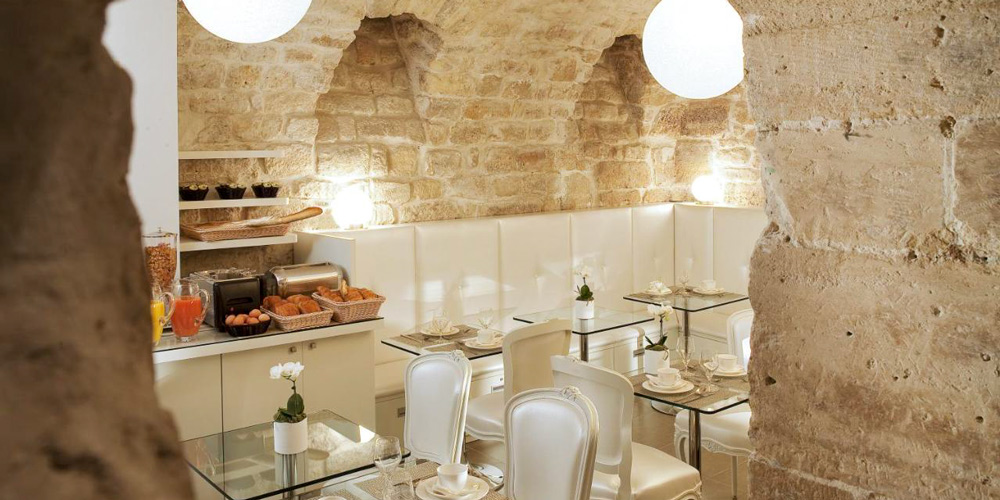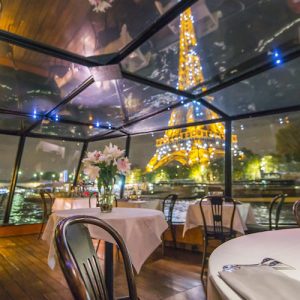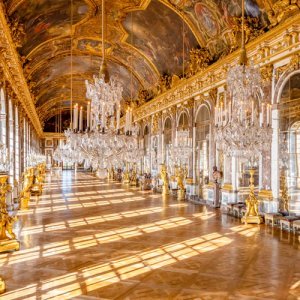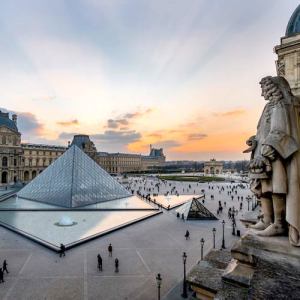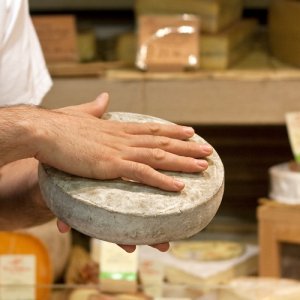The Marais – What To Do & Where To Stay In This Historic Quartier
The Marais – What To Do & Where To Stay
The Marais (comprising the 3rd & 4th Arrondissements) is one of the most popular quartiers of Paris. And no wonder — it's replete with old-world charm, narrow cobblestone streets, hidden courtyards & gardens, a multitude of mansions (called hôtels particuliers), a vibrant Jewish community, and a thriving gallery & cafe culture. Let's explore the best places to stay and the best things to do in the Marais.
![]()
Our Top-Rated Experiences in the Marais
1. Taste of the Marais Food Tour… Fromageries, boulangeries, charcuteries, wine shops & more
2. Cheese and Wine Tasting in a Private Paris Cheese Cellar… Learn from a Master Affineur
3. Guided Tour of the Historic Marais… Small group & expert guide
4. Private Tour of Musée Picasso… The world's best Picasso Museum
19 Great Things About The Marais
1. Musée Picasso Paris
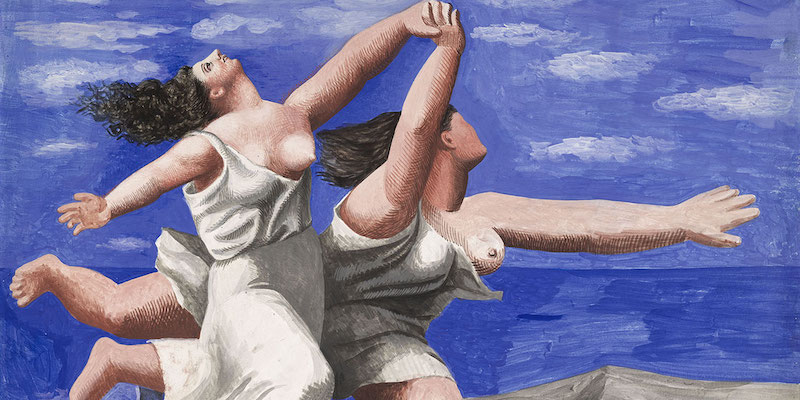 Pablo Picasso, Women Running on the Beach, Musée Picasso Paris
Pablo Picasso, Women Running on the Beach, Musée Picasso Paris
Although there are numerous museums around the globe dedicated to Picasso, the one in Paris is the pinnacle. Housed in a magnificent hôtels particulier Rue de Thorigny, here you'll find the world's largest treasure trove of Picasso's paintings, sculptures, love letters, poetry, and photography.
![]()
Discover What's On When You're Here...
• January... |
• February... |
• March... |
• April... |
• May... |
• June... |
• July... |
• August... |
• September... |
• October... |
• November... |
• December... |
Discover What's On When You're Here
• January...
|
• February... |
• March... |
|---|---|---|
• April... |
• May... |
• June... |
• July... |
• August... |
• September... |
• October... |
• November... |
• December... |
2. Taste of the Marais Food Tour
This popular food tour is a great way to discover the Marais, starting you from the oldest food market in the city and then wending through the streets of the historic neighborhood. You visit top cheese shops, boulangeries, charcuteries, wine shops & more. As you sample the culinary delights of Paris you also learn about the marvelous Marais.
3. Hotel du Petit Moulin
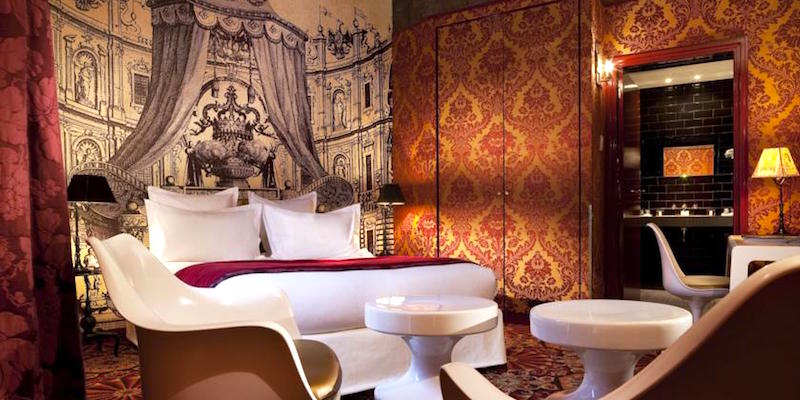 Christian Lacroix designed room, Hotel du Petit Moulin
Christian Lacroix designed room, Hotel du Petit Moulin
You know that a hotel designed by Christian Lacroix is going to be fabulous, and the Petit Moulin doesn't disappoint. The fun starts outside, where the hotel has retained the facade of the historic boulangerie that once occupied the building. This is our top pick in the Marais.
4. Walking Tour of Historic Marais
![]() The streets of historic Marais
The streets of historic Marais
This private tour of the Marais gives you a glimpse into three or four different aspects of the quartier. There's the Paris of the 17th century royalty, when Place des Vosges was created and the Marais was filled with the homes of the aristocracy. Then there's the Paris of Jewish life with delis, bagel shops and synagogues. And finally there's the Paris of today, filled with interesting shops and a chic destination for Sunday brunch, as well as being the center of gay Paris.
5. Hotel: Le Pavillon de la Reine
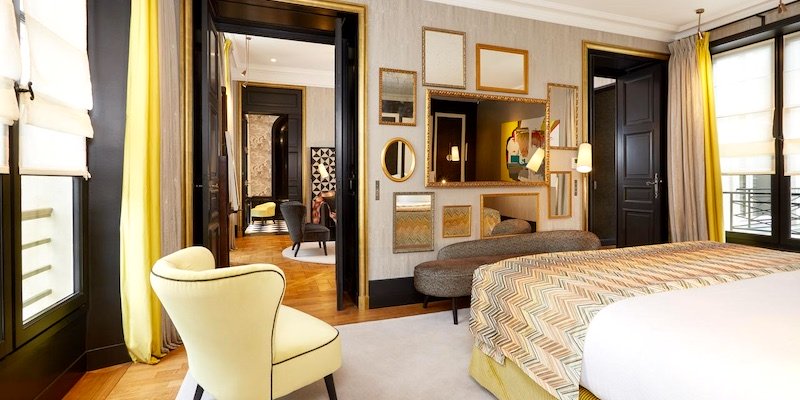 An elegant chambre at Le Pavillon de la Reine
An elegant chambre at Le Pavillon de la Reine
From the Place des Vosges you enter a tranquil courtyard that leads to Le Pavillon de la Reine. The hotel is an oasis of calm. Le Pavillon feels secluded, yet is in the heart of the Marais, close to museums and shopping. This is our (very close) runner-up hotel in the Marais.
6. Tour: Explore The Historic Jewish Quarter
This guided walk also introduces you to historic Marais. Led by a professional English-speaking guide your small group explores the medieval Jewish Quarter, today an active hub of community life. There's a lot to see here and a guide really helps make it come alive. You also visit the Hotel de Ville, historic churches, Hôtel Carnavalet (home to the history of Paris museum), the garden at Hotel de Sully, and more.
7. Marché des Enfants Rouges
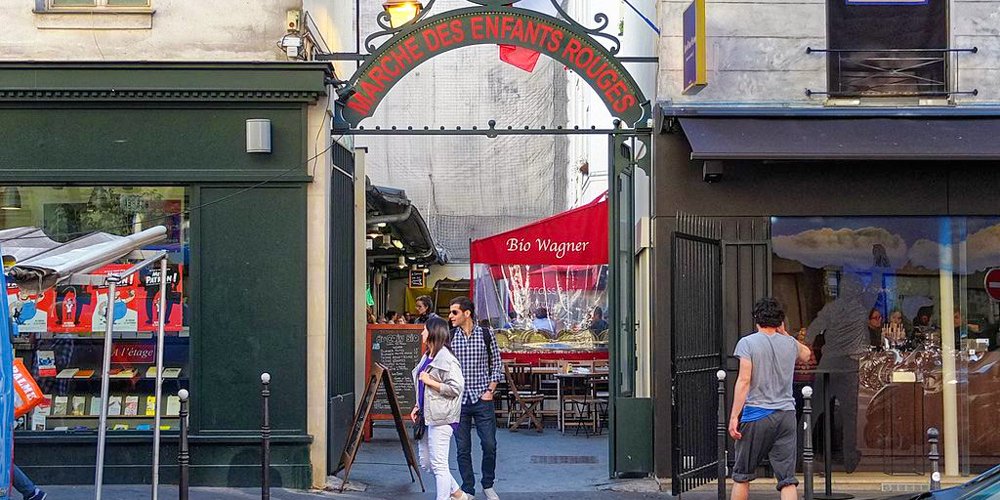 Entrance to Marché des Enfants Rouges, photo Wikimedia by besopha
Entrance to Marché des Enfants Rouges, photo Wikimedia by besopha
At 400 years and counting, Marché des Enfants Rouges is the oldest covered market in Paris. There are better fresh food markets in the city, but this is the place to go to eat. Choose from Japanese bento boxes, hamburgers et frites, crepes, and Moroccan couscous. It's not exactly a food court, each stall is individually owned and operated. The market was created in 1615 by Louis XIII to supply food to the then up-and-coming neighborhood.
- 39 rue de Bretagne, 75003
- Metro: Saint-Sébastien–Froissart
8. Hotel Beaubourg
We call this a "classic Parisian hotel" with tidy rooms, an elevator (not always common in the Marais), and easy access to everything you want in the district. Our top tip is to ask for a room overlooking the inner courtyard.
- 11 Rue Simon-Le-Franc
- Highly Rated
9. Place des Vosges
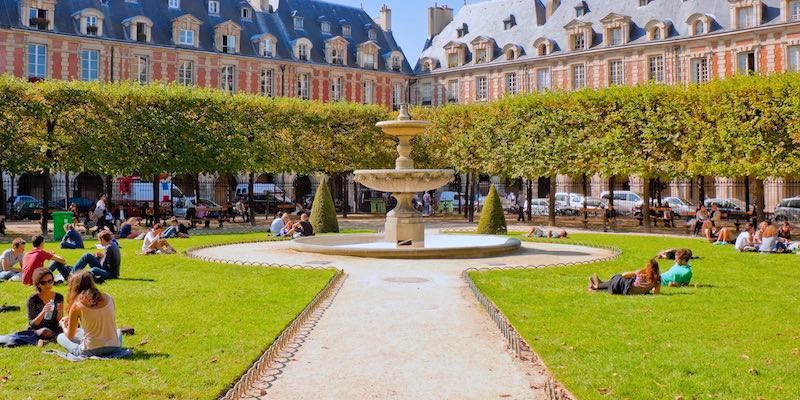 A summer day at Place des Vosges
A summer day at Place des Vosges
In the Marais you can visit the oldest place, or square, in Paris and one of the prettiest. Place des Vosges was the inspiration for hundreds of squares (it's where the name came from) around Europe and the first Paris park to be open to the public. A great location to start your walking tour of the Marais, you can explore the shops along Rue des Francs Bourgeois and stop for a Jewish pastry on Rue des Rosiers.
10. Hotel de Ville
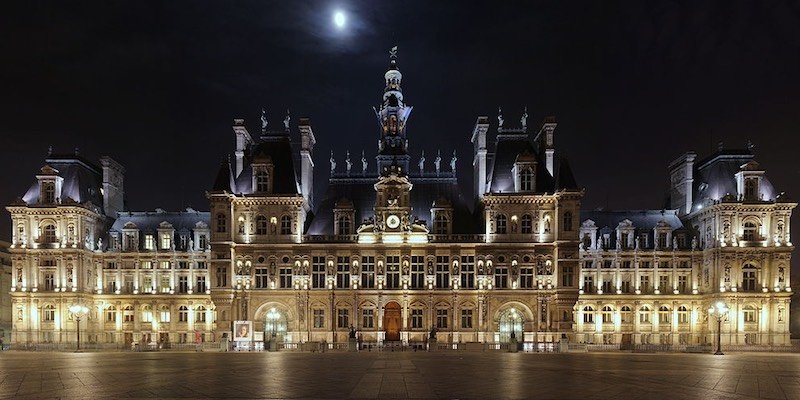 Hotel de Ville, photo Wikimedia by Benh Lieu Song
Hotel de Ville, photo Wikimedia by Benh Lieu Song
The magnificent Paris City Hall sits on the banks of the Seine in the 4th Arrondissement and has been the seat of city government since 1533. The building itself was gutted by a fire during the tumultuous Paris Commune of 1871 but was rebuilt in the years that follow. The plaza in front of the building is a center of municipal life hosting concerts, a winter skating rink, and other activities.
11. Hotel Caron
Just off Rue de Rivoli and a two-minute walk from Saint-Paul Metro station, this small hotel (only 18 guest rooms) is set on a side street in the Marais. Cozy, clean, charming.
12. Musée d'Art et d'Histoire du Judaïsme
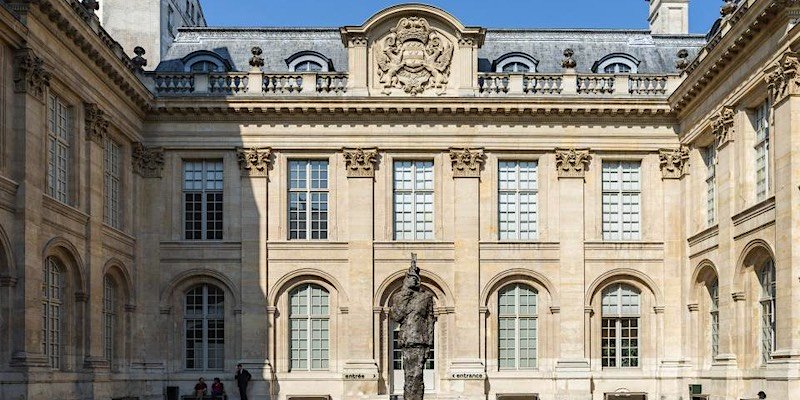 The Museum of Jewish Art and History
The Museum of Jewish Art and History
At the Museum of Jewish Art and History you trace the evolution of Jewish artistic and cultural heritage. The museum focuses on French Jewish history since the Middle Ages. Its collection is one of the finest in the world and includes works by Marc Chagall, Chaim Soutine, Michel Kikoine and Amedeo Modigliano.
- Hôtel de Saint-Aignan, 71 Rue du Temple, 75003
- Metro Rambuteau
- Website…
13. Musée de la Chasse et de la Nature
 At the Museum of the Hunt and of Nature, photo by Mark Craft
At the Museum of the Hunt and of Nature, photo by Mark Craft
It's a strange but fascinating little museum, one that honors the hunt but also explores the relationship between man and the natural world. It was first opened in 1967 in the Hôtel de Guenegaud, a 17th-century mansion. Forty years later, it was expanded to include the mansion next door, the Hôtel de Mongelas.
- 62 rue des Archives, 75003
- Metro Rambuteau
- Website…
14. Musée Cognacq-Jay
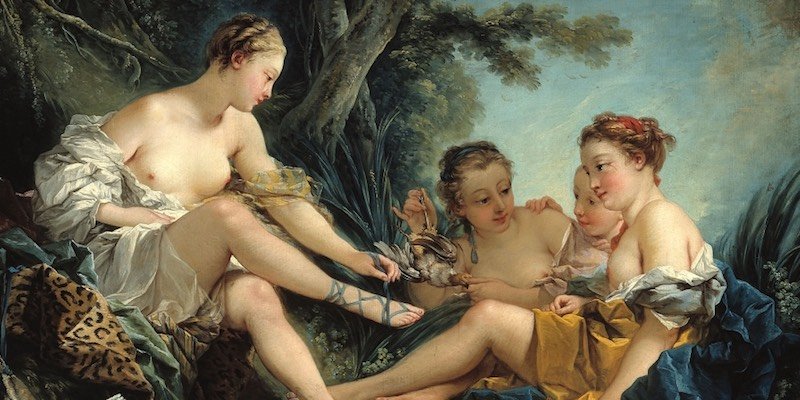 Boucher, Retour de Chasse de Diane, at Musée Cognacq-Jay
Boucher, Retour de Chasse de Diane, at Musée Cognacq-Jay
Ernest Cognacq (a retail magnate of the Belle Époque) and his wife donated their possessions to the City of Paris. It is now a beautiful collection of fine art and decorative items focusing on 18th-century France. 8 Rue Elzevir, 75003.
15. Musée Carnavalet – Museum of the History of Paris
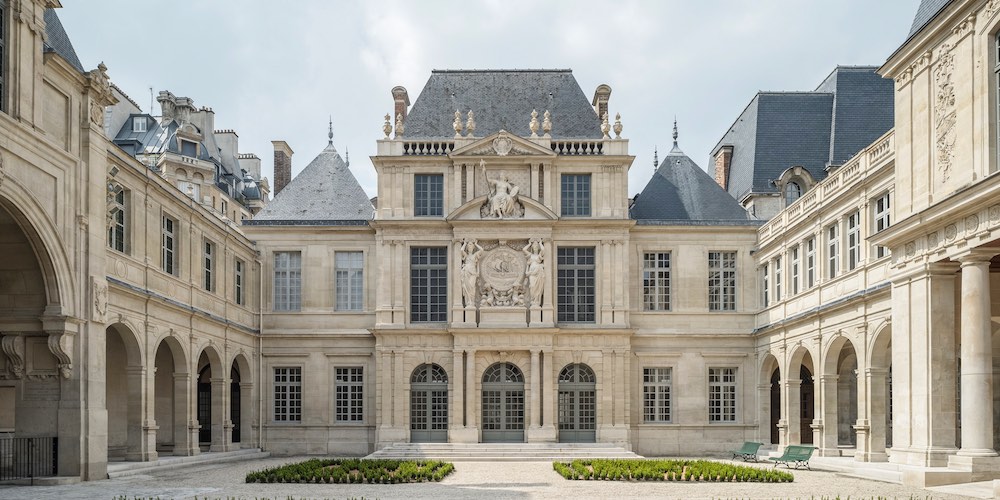 Musée Carnavale inner courtyard
Musée Carnavale inner courtyard
This rambling mansion (actually, it's two mansions) is the perfect place to discover the history of Paris. It's rarely crowded and has many fascinating permanent exhibits as well as a pretty garden to relax in. Access to the permanent galleries are free. A grand re-opening in 20201 revealed an expanded, refreshed museum that's a delight to visit.
- 23 Rue de Sévigné, 75003
- Closed Monday
- Website…
16. Museum: The Pompidou Center
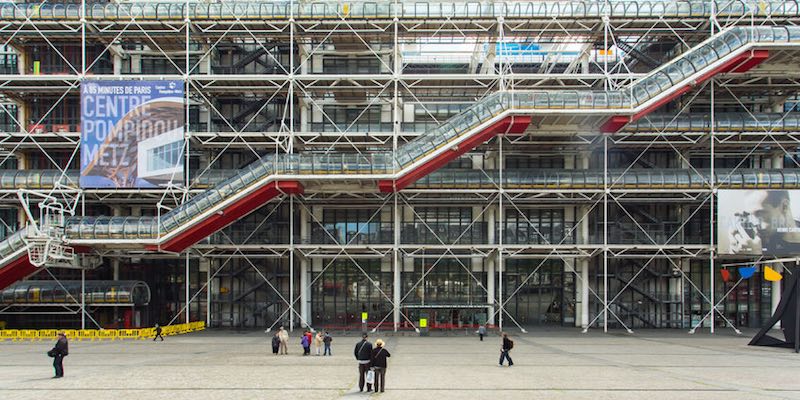 The iconic & controversial facade of Centre Pompidou
The iconic & controversial facade of Centre Pompidou
Hate it or love it, this paean to modern art is one of the busiest museums in Paris. The somewhat controversial Pompidou Center (opened in 1977) cut a swath through the medieval Marais neighborhood, destroying historic buildings in its path. But, it is the place to see the works of David Hockney, Picasso, Klee, Philippe Starck, Andy Warhol, and other great modern artists — if you like that sort of thing. The Pompidou will be closed for renovations between 2025 and 2030.
17. La Maison Européenne de la Photographie
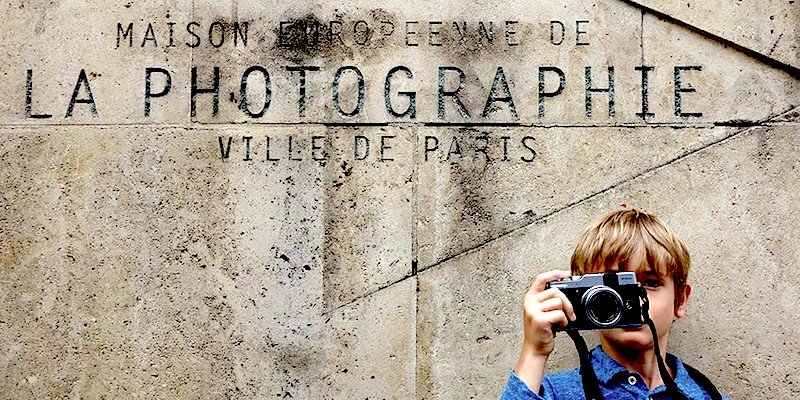
The House of European Photography is one of the most important museums of photography in Europe with exhibitions that change often. We always head here to see the new shows. The museum itself is housed in one of those fabulous mansions we mentioned; this one is the Hôtel Hénault de Cantobre, built in the 17th century. The entrance is on Rue de Fourcy just around the corner from the Saint-Paul Metro station.
- 5-7 Rue de Fourcy, 75004
- Closed Monday & Tuesday
- Website…
18. Maison Victor Hugo
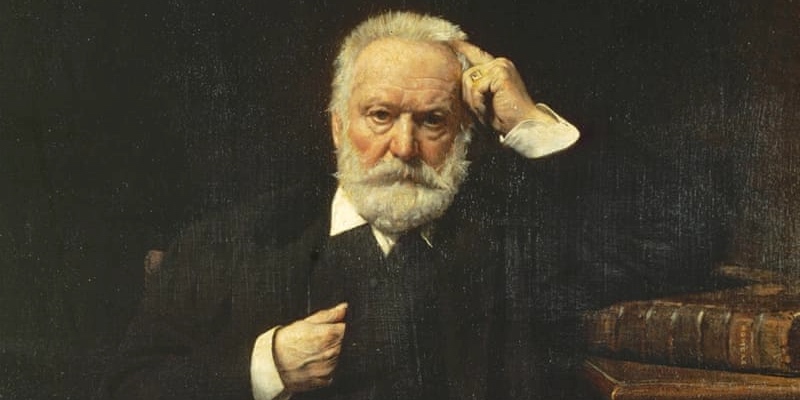
After resting your feet next to one of the pretty fountains in Place des Vosges, go directly into one of the most charming, hidden museums in Paris. Explore the very rooms where Victor Hugo lived and wrote. Make sure you snag an audio guide to learn about the 1,000 love letters Hugo penned during his lifetime, many were to his long-time mistress, actress Juliette Drouet over a 50-year period. Located in the southeast corner of the square. Entrance is free.
- 6 Place des Vosges, 75004
- Closed Monday
- Website…
19. Jewish Marais
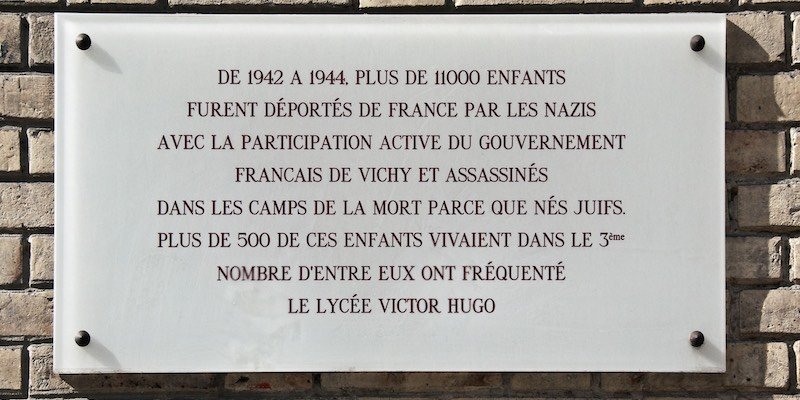
Ever since the Romans conquered the city in the 1st century BCE, Jews have lived in Paris. And as early as the 13th century they settled in the Marais, still the city's most famous Jewish neighborhood. Known as the Pletzl (Yiddish for "little place"), the Marais was once also known as La Juiverie.
Although it's one of Paris' most trendy areas, the Marais still has a strong Jewish presence.Walk along Rue des Rosiers and you will find Jewish restaurants, bookshops, boulangeries, kosher delis, and synagogues. Stop at #10 Rue Pavée to visit Agudath Hakehilot, an orthodox synagogue designed by Hector Guimard, the Art Nouveau architect famous for his Paris Metro station entrances. Built in 1914, it's the largest synagogue in the Marais. Guimard's wife was an American Jew; with the rise of anti-semitism they left France for the United States in 1938.
On Yom Kippur in 1940, the Germans destroyed the synagogue with dynamite. After World War II, Agudath Hakehilot was restored and is now a national monument and a vital meeting center.
Dynamiting synagogues was by no means the worst of Nazi atrocities. Throughout the Marais there are plaques to remind us about the Jewish families and children who were wrested from homes and schools and sent to concentration camps to be killed. It's a painful and poignant reminder of France's treatment of Jews during World War II. Another typical plaque reads —

To the memory of the students of this school, deported from 1942 to 1944 because they were born Jewish, innocent victims of Nazi barbarism, with the active complicity of the Vichy government. They were exterminated in the death camps. Never forget them."
The Marais – Fun Facts
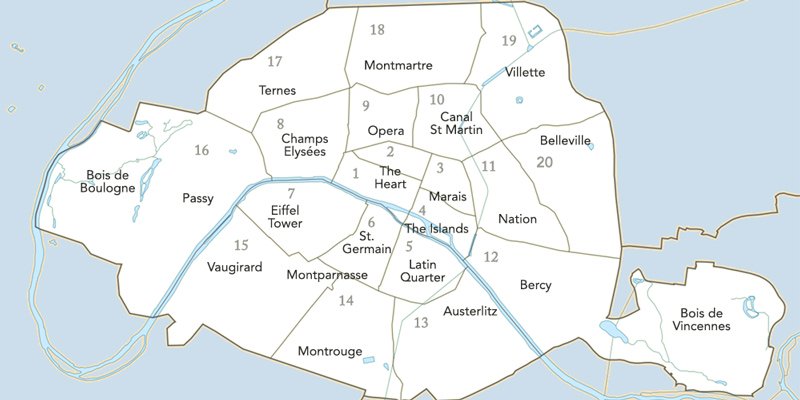 Arrondissement map, from Wikimedia by Eric Gaba, modified by Mark Craft
Arrondissement map, from Wikimedia by Eric Gaba, modified by Mark Craft
- Ils n'Existent Pas. To be strictly correct, the 3rd and 4th Arrondissements no longer exist — in 2020 they were amalgamated, along with the 1st and 2nd, into a new administrative district called Paris Central. The area still remains to one and all at The Marais.
- Historically, this area, built over marshland ("marais"), was the neighborhood of choice for the aristocracy from the 13th to the 17th centuries.
- The Marais is built on a smaller scale than the rest of Paris, retaining the feel an look of its 16th-century heyday. Here you won't find grand hotels, but smaller, charming places to call home.
- Untouched by Haussmann's 19th-century rebuilding of Paris, the luxurious hôtels still line the streets; many of them now house some of the best museums in the city. What the Marais district doesn't have are the grands boulevards or the big parks found in much of the rest of the city. It's all small, maze-like streets, giving you a glimpse of what Paris looked like 200, 400, even 600 years ago.
- Place Royale (as Place des Vosges was first called) was built by Henri IV and is a true square, measuring 140 m x 140 m. By the way, the square was renamed in 1799 when the département of the Vosges in eastern France became the first jurisdiction to send tax money to support the state after the French Revolution.
- More about Musée Picasso: Opened in 1985 and housed in the 17th-century Hôtels Sale, the Picasso Museum was closed in 2009 after an infamous art theft. It only reopened in 2015 (with better security, we hope). The elegant mansion is the perfect place to peek into Picasso's monumental treasure trove of his paintings, sculptures, love letters, poetry, and photography.
Paris Planning Guides
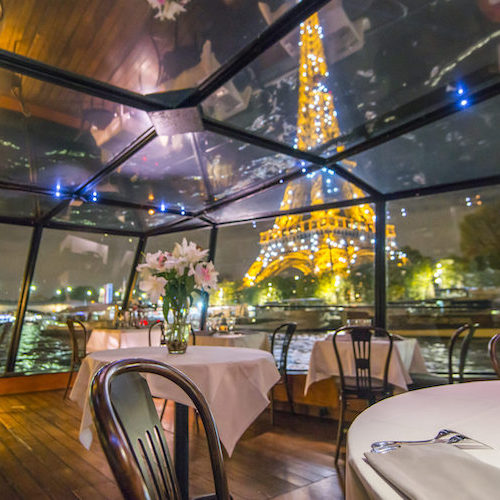 Glorious Dinner Cruises
Glorious Dinner Cruises |
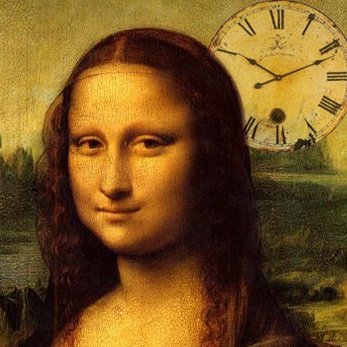 Skip the Museum Lines
Skip the Museum Lines |
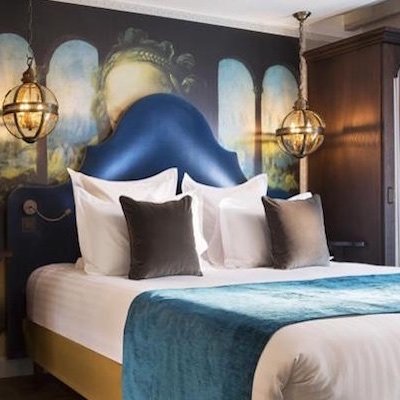 Left Bank Hotels
Left Bank Hotels |
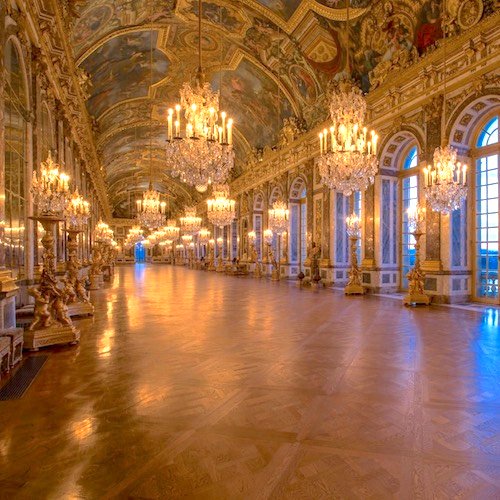 Visiting Versailles
Visiting Versailles |
Six Free Paris Planning GuidesA Gift from Us to You.
|
